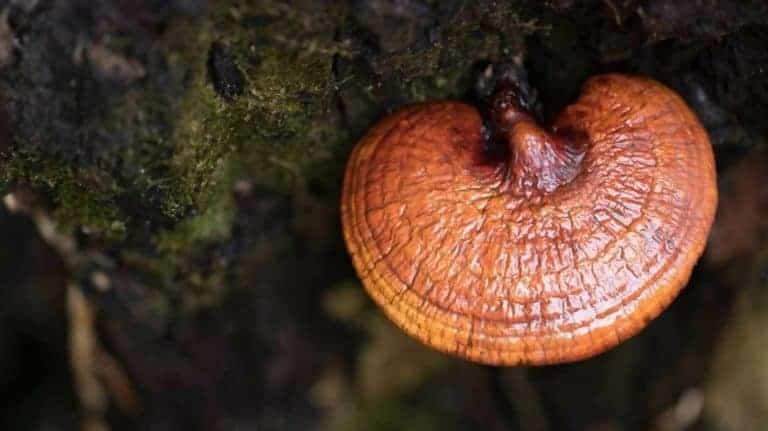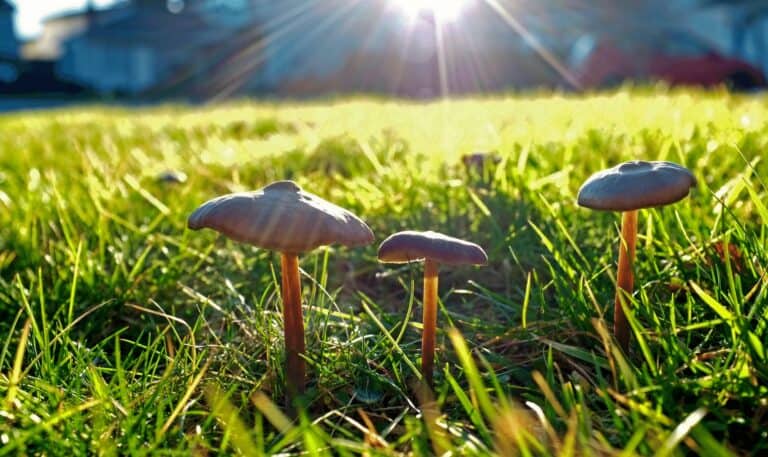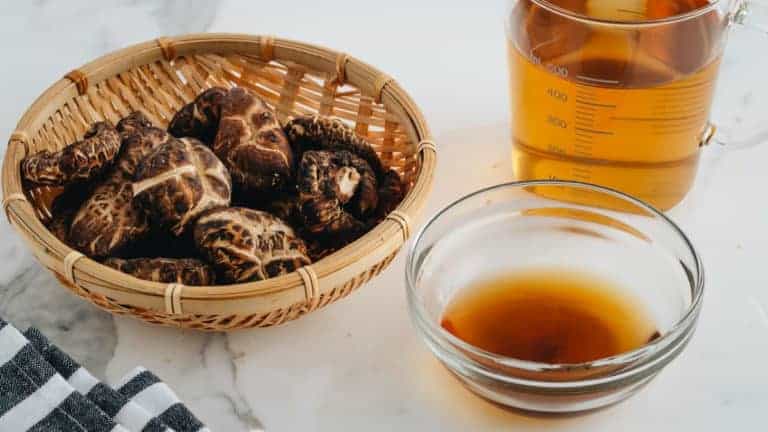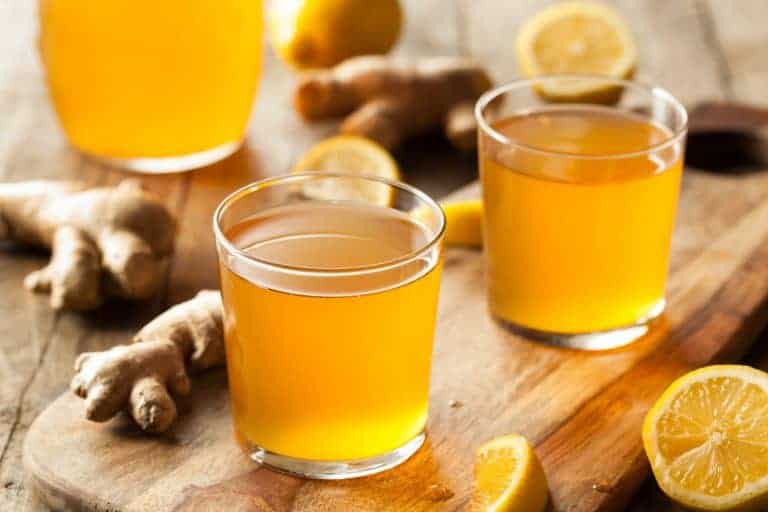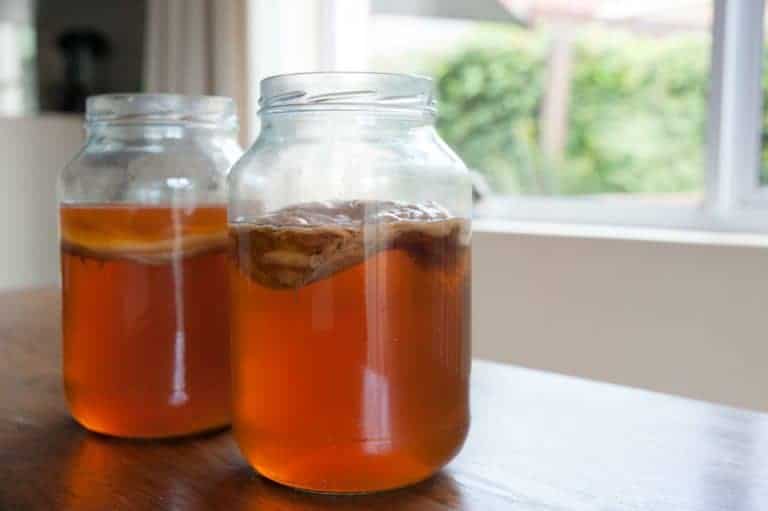The Magic Mushroom Experience

With all of their recent media attention and clinical trials, you may be interested in learning more about the magic mushroom experience. Or perhaps, you are interested in exploring and studying consciousness. Magic mushrooms can induce a state of consciousness vastly different from everyday reality, and these experiences can sometimes be transcendent, insightful, and blissful or terrifying, dark, and overwhelming. Based on a recent trial with healthy volunteers, over 70% of those who had a magic mushroom experience reported it was one of the top five most spiritually significant and meaningful experiences of their lives.
Besides the recent clinical trials and media coverage, perhaps magic mushrooms also bring to mind the “turn on, tune in, and drop out” culture of the 1960s. However, magic mushrooms have been documented since the 16th century. Their use in religious and spiritual ceremonies extends millennia beyond this, even predating recorded history.
What we do know is that psilocybe mushrooms were used for millennia by Indians in South and Central America. One of the earliest written accounts of their use dates back to the 16th century by a Spaniard who wrote of their use by the Aztec’s. The Aztecs referred to the magic mushroom Psilocybe aztecorum as “teonanácatl” or “flesh of the gods”.
Their long history of use and current focus in both the media and clinical research makes them one of the most popular psychedelics with great therapeutic potential.
In this article, we are going to take an in-depth look at magic mushrooms. We will discuss what its psychoactive component is, how it is dosed, its mechanism of action, and some potential cautionary measures to take when using. Then we will take a look at what sort of effects the mushroom experience can bring on, and then explore ways to maximize the chance of a positive trip with preparation tips. We will end with clinical implications of their use and suggested resources for more information.
The Fly Agaric: another historically relevant divinatory mushroom
It’s important to note psychedelic mushrooms extend beyond psilocybin-containing mushrooms, however. The white-speckled red-caped Fly agaric or Amanita muscaria is perhaps one of the well-known and iconic mushrooms in modern culture. This mushroom was discovered by ethnomycologist R. Gordon Wasson to be a critical component in the Vedic brew called soma, an intoxicating brew used in ancient Indian religious ceremonies for over 4,000 years. Instead of psilocybin found in magic mushrooms, the compounds that confer its psychedelic properties are muscimol and ibotenic acid.
The Chemical Key to New Psychic Doors: Psilocybin
Psilocybin is the psychoactive compound found in all magic mushrooms. Psilocybin was isolated in the mid-’60s when magic mushrooms were being widely studied and used recreationally. In 1968, possession of psilocybin mushrooms was made illegal in the United States.
Psilocybin is considered a “prodrug” because once it has entered the body, it is metabolized to psilocin in the liver, the active metabolite responsible for its psychedelic effects. Psychedelic is a word made from “psyche” and “delia”. Etymologically, it means “soul-manifesting”.
Over 200 species of mushrooms contain psilocybin, including the genera Stropharia, Pluteus, Psilocybe, Gymnopilus, and Conocybe. The members of the Psilocybe genus contain the most psilocybin and are the most commonly cultivated and consumed.
Nearly every psilocybin-containing mushroom are small brown or tan mushrooms that can be misidentified for non-edible or poisonous mushrooms when gathered outside. For this reason, there are risks involved in picking magic mushrooms without someone experienced. In general, psilocybin-containing mushrooms tend to bruise blue when handled, which can be helpful in the identification process.
Many psilocybin-containing mushrooms grow in the wild, but many that are taken recreationally are cultivated. Many mushrooms that are taken recreationally are cultivated in a relatively easy and inexpensive manner. Psilocybe cubensis is one strain that is very commonly cultivated.
How does psilocybin work in the brain?
Psilocybin is a psychedelic tryptamine, which is structurally similar to the natural neurotransmitter serotonin in the brain. It, therefore, binds to and stimulates serotonin receptors in the brain. Besides psilocybin, psilocin and baeocystin are other active alkaloids responsible for its hallucinogenic and psychedelic effects.
On a larger scale, psilocybin reduces blood flow and activity in several regions of the brain. Research from 2014 showed that psilocybin created more communication between regions of the brain that don’t normally communicate. Similar to deep meditation, psilocybin also reduces activity in the brain region that is associated with a feeling of self (default mode network), which could account for its ego-shattering potential.
How is psilocybin dosed?
Recreational doses can range from 0.1g to 5g of dried mushrooms, depending on the specific species and its strength (psilocybin content). There is a wide range of potencies between different species and even within the same species. Dosing for fresh, wet mushrooms will be approximately ten times higher than dried mushrooms. For this reason, they are normally consumed dry either directly eaten, brewed in tea, or made into chocolate or other foods. In clinical trials, intravenous psilocybin is commonly used and much less is needed, about 3-30mg/70kg.
For first-timers, starting small (with a microdose of 0.1g-0.5g) and working your way up is highly recommended. Since everyone reacts differently to a mushroom experience, this helps gauge how your body and mind handle psilocybin and gets you more familiar with the unfamiliar shift in consciousness. More moderate doses are approximately around 1g-2.5g, and strong doses are between 2.5g-5g. Heroic doses of more than 5g are uncommon but are reported, especially among shamanic healers and highly experienced psychonauts.
One of the most common dosing concerns is nausea. This can be brought on if dosing by dosing straight dried mushrooms or eating truffles. To minimize this, it is recommended to grind up the dried mushrooms into a small crumbs with a coffee grinder or small blender. From here, they can be eaten with yogurt, chocolate, or thrown into orange juice. The powder can also be brewed into a tea, but usually this results in a slightly shorter or weaker trip (psilocybin is heat sensitive). To make tea, bring water to approximately 160F and steep the mushrooms in it. This can be consumed and repeated several times until the mushrooms are depleted.
Psilocybin is one of the safest recreational drugs
Although psilocybin mushrooms are legally considered a Schedule I drug and illegal in many countries (besides the Netherlands and a few other countries), they are remarkably low in health risk. Psilocybin is non-addictive and death from physical toxicity is virtually unheard of. Of more than 12,000 people who took psilocybin in 2016, only 0.2% of them required emergency medical treatment. While there are a few horror stories of people jumping off of buildings or into traffic, these tales have been largely overblown in the media over the decades and are exceeding rare.
However, two main cautions to bear in mind are the psychological risks and where you are sourcing the mushrooms.
Don’t take magic mushrooms if you are vulnerable to mental illness
If you have a predisposition to mental illness or a history of psychosis, it is not recommended to take recreational doses of magic mushrooms. While psilocybin and other psychedelics haven’t been demonstrated to be causally linked to mental illnesses like schizophrenia, it may exacerbate an existing or dormant condition.
Make sure you source your magic mushrooms from someone or somewhere trustworthy
Incorrect sourcing of psychedelic mushrooms is probably the most physically dangerous aspect of taking the drug. Some psilocybin-containing mushrooms can look like several toxic varieties such as Galerina marginata. It’s best to never pick a wild mushroom without the help of a proper expert who can positively ID it as a Psilocybe mushroom.
Exploring Well: Mushroom Trip Preparation
Before embarking on any sort of magic mushroom journey, which can last approximately six to eight hours, it’s important to be adequately prepared. The infamous “set and setting” maxim coined by Timothy Leary in 1961 is crucial in the outcome of any trip. Set refers to the mindset going into the trip, and setting refers to the social and physical environment in which you are taking the drug. When either of these is out of balance, the trip has a greater chance of being undesirable, to say the least.
A good mindset going into the trip can make a huge difference in the experience
In many ways, psilocybin acts as a non-specific amplifier of the mental contents already present. If the drug is taken under a bad mood or fearful or stressful conditions, it may intensify these feelings or swell up negative unconscious emotions. Timothy Leary, a former Harvard psychologist and leader in psychedelic advocacy, said he learned more about how the mind works from one 8 hour psychedelic experience than his years of formal education in psychology. The trip may bring to consciousness repressed emotions or our “shadow” side, that is, all the undesirable unconscious parts of ourselves that we project on others. On the other hand, it may be a “peeling away” process, stripping us of who we thought we were and crumbling our existing mental structures and models. This experience can be overwhelming, especially if it is resisted or we try to exert control over the experience.
Make sure your physical environment is safe, familiar, and comfortable!
The consciousness during a trip is also very sensitive to the physical environment, as well. If you are in an unfamiliar or potentially unsafe place, it may trigger a vicious cycle of anxiety or fear. Strong social support networks are also highly correlated with a good trip experience. If you are having the experience with people you don’t know or trust very well, this may potentially bring on feelings of anxiety or judgment during the trip.
Being in nature can be a transformative experience, but having a sober trip guide can help reduce the chance of getting lost if tripping outside, such as on a non-strenuous hike or psychedelic-friendly festival. Natural tripping can bring forward feelings of peace and harmony; a return to our roots. Indoor tripping may feel safer for some people but may lead to more introspective trips because there is less external stimulation than outside.
Try dosing early in the day, preferably on an empty stomach
For the best effects, eat a very light dinner the night before and consume before breakfast, preferably between 8am-12pm. This gives you full sun exposure during the trip and then the possibility of having a nourishing dinner that same day. Make sure you have at least eight hours carved out solely for the journey. The last thing you want is any unexpected visitors or work obligations to intrude on a very personal and vulnerable experience.
Wear comfortable clothing, and have food and water
It’s very important to make sure other general logistics of the experience are planned out, such as what to wear, food and water, and maybe recreational activities. If you plan on being outside, dressing for the weather (especially the cold at night) can potentially transform a miserable experience into a highly positive experience. Wearing comfortable clothing that isn’t too complicated can also help minimize confusion or distress later on. Of course, having food and water on hand can prevent any disorienting searches later on, or the often unwanted desire to go into a public place.
Try prepping some trip activities such as art or journaling
It can also be helpful to go in with a set of activities that you may enjoy. Many times the experience can be contemplative and introspective, but having a journal, a sketchpad, or a music playlist lined can be an excellent way to channel the creative forces that will be flowing and aid in the integration of the psychedelic experience. As for music playlists, this is of course whatever you personally enjoy, but East Forest made an ambient soundtrack incorporating natural sounds specifically for a mushroom experience. The albums of Shpongle combine worldly sounds into an experience that seems to mirror the internal experience of coming up, peaking, and coming down.
Try setting a positive trip intention
Going into the experience with a trip intention can also set the mood and help ensure a great time. The more the mushroom is seen as a medicine to be respected and in intimate dialogue with rather than just another drug to use recreationally, the more it may teach and reveal to you important and meaningful matters.
Drop into the present moment before the trip
Meditating or doing yoga before the trip can help bring the mind to a calm, open space conducive to psychedelic journeying. A few positive mantras or affirmations can also help us sink into the present moment and remove any negative anticipatory anxiety or thoughts.
Try reading a guidebook to navigate difficult experiences or integrate them
Many guidebooks exist that can be used as preparatory reading material, or even during the experience (however, audiobooks may be more suited for higher doses due to the visual effects). The Psychedelic Experience by Timothy Leary, Richard Alpert, and others is a classic psychedelic guidebook and is a great introduction to the transition states in the psychedelic journey. It can be used to navigate the difficult experiences one may encounter on their journey. These books can also be enormously helpful for integrating the experience after the fact, since many times in the moment the revelatory experiences often appear to be beyond the capacity for language to express them.
The Effects of Magic Mushrooms
You’ve just eaten your first bit of magic mushrooms. They tasted something like stale sunflower seeds, and now it is time to wait.
Coming up: 0-1 hour
The effects of magic mushrooms start to become apparent after about 30-60 minutes, but this also depends on when you’ve last eaten. At first, there may be feelings of energy or anticipation in the body. Not long later, the pupils may become dilated, thinking may become altered (new perspectives may start to emerge), and there may be a general feeling that something is different in the mind and body. Emotions may also change quickly, leading to lots of laughter. During this time, nausea and/or gastrointestinal discomfort is also commonly reported. Colors may seem to be brighter or glow more, and textures may appear more rich.
Peaking and plateau: 1-3 hours
After about an hour, deep alterations in the psyche can start to occur. There may be intense feelings of insight and wonder, a flow state, new childlike perspectives on current lifestyle and behaviors, and quickly changing emotions that range from laughter and feelings of “coming home” to cathartic or beauty-inspired crying. Having this novel perspective on yourself is a great catalyst to personal development. It may be a good time to reflect on yourself: your goals, desires, fears, relationships, and beliefs.
Depending on the dose, both open-eyed and closed-eyed visuals are very common. The visual field may be melting, breathing, or complex geometric patterns can start to emerge on objects. Dream-like visions and auditory hallucinations are commonly reported.
Significant time dilation (feeling as more time has passed than in reality) and space distortion can occur along with intense closed eye visuals. Spiritual or transcendent experiences can also occur such as “ego death”, where the layers of the ego or self-identity start to disintegrate. Such an experience leads to transformational feelings of oneness and widened loving awareness. One may feel intimately united with the environment in a state of non-dual consciousness.
Coming down and afterglow: 4-9+ hours
Compared to other recreational drugs, the comedown of psilocybin is mellow and generally positive. In the comedown, closed eye or open eye visuals may still be present but less intense. Feelings of creativity, imagination, and openness are still present. You may feel more emotionally sensitive, and lights may seem brighter and starlike.
In the body, there may be pleasant sensations and feelings of energy and tingling. The pupils are still dilated. Any significant nausea from eating the mushrooms is likely absent by now. You are more or less functional but still buzzed.
After about six hours, you’ll probably be entering what feels like sober consciousness again. More complicated concepts are probably crystallizing now, and ego structures are returning. The place of naked, raw existence is being slowly replaced by the familiar inner voice in our heads. You may feel tired and hungry from the journey if you weren’t eating or if it’s late in the day.
In the afterglow, which can extend from the next day into the next week, many people commonly report feeling more content with life, report positive visual changes (more vivid vision, for instance), and greater feelings of spiritual connection and empathy with others and nature. Participants in trials report significant increases in the openness and extraversion components of their personality. This appears to be permanent following a single moderate to heavy dose of psilocybin.
The Dreaded Bad Mushroom Trip
The dark side of the mushroom experience is the potential for manifesting an intensely negative, frightening, and dark psychological state. Bad trips can be a few moments and reside from an environment change, or engross nearly all of the experience if the experience is fought with rather than surrendered to. Bad trips can involve:
- Intense feelings of fear
- Feelings of dread or doom
- Extremely distressing thoughts that seem to loop
- General confusion and/or disorientation
- Moderate or intense existential anxiety
- Feelings of loss of control or self
- Feeling like you will never be sober again or have gone insane
- Panic attacks
- Racing heartbeat and high blood pressure
- Self harm or harm to others (rare)
What causes bad trips?
These trips can be brought about by things such as negative thoughts or feelings that spiral out of control in a self-fulfilling prophecy, an unsafe social environment, latent psychological disorders expressing themselves, or more generally, by the “set and setting” being out of balance.
How are bad trips worked through?
Bad trips can be exited through sedatives in very bad cases, however, mostly a bad trip can be remedied by a change in environment or tapping into the present moment through anchoring awareness to the breath. It is crucially important to accept all of the negative experience rather than fighting it. If the visions are causing distress, open yourself up to them and step toward that which is feared most. Fighting it only gives the negativity more power over your mental state. It can also help to be reminded that the experience is only temporary, as much as it may feel at the time to be a permanent state of mind.
In severe cases, the after-effects of a bad trip may be psychologically traumatic and may resemble PTSD. This could require therapeutic or pharmacological intervention to integrate the experience or calm down the negative neural pathways that were kindled and strengthened by the intensely vulnerable experience.
In rare cases, hallucinogen persisting perception disorder (HPPD) can occur wherein elements of the trip reappear in sober consciousness later (similar to the common notion of “flashbacks”). This normally resolves within weeks or months for most people.
Bad trips can be important learning experiences despite their challenging nature
In a study from Griffiths and colleagues examining nearly 2000 participants that had a bad mushroom trip, 84% of people report having benefited from the challenging experience. This isn’t too surprising, as often the most difficult experiences of our lives can be the most formative or instructive. Oftentimes, after the bad trip is over, the experience can be one of the most cathartic of a person’s life.
Medical Implications of Psilocybin
Although the increasingly stringent drug laws in the 1960s largely stifled scientific research into psilocybin, its popularity across clinical trials and popular culture is steadily growing today. Johns Hopkins University in Maryland is at the forefront of much of this research. Rolland Griffiths and colleagues have been studying how psilocybin can help alleviate palliative care and end of life distress in terminal patients. The below effects persisted long term, for months after the initial two sessions.
They found that the mystical experience created by a single dose of psilocybin:
- Creates a shift in awareness that can transform long-held beliefs about the nature of the self, being, the body, and death. Questions arise such as does consciousness exist eternally outside the brain, and the brain “tunes in” to consciousness similarly to how a TV set “tunes in” to a TV signal.
- The experience of terminal illness can be transformed and may no longer hold the same anxious or fearful weight. This is due to the contact with the transpersonal realm of others, nature, and the sacred.
- Improved existential, spiritual, and psychological well being.
- Increased gratitude and appreciation for time being alive, as well as an increased sense of meaning and existential purpose.
- Increased acceptance of the inevitability of death. Seeing death as a natural part of the cycle of life.
- A visceral understanding of the impermanence of all phenomena. That life doesn’t exist without death, and they are intimately connected in moment-to-moment experience.
- Enhanced relationships with others and expressions of love, joy, intimacy, and forgiveness.
Psilocybin has also recently been supported by the findings of several clinical trials as a promising treatment approach to clinical depression, anxiety, post-traumatic stress disorder, obsessive-compulsive disorder, and addiction.
Similar to the findings for patients with end of life distress, 80% of the participants showed significant decreases in depression and anxiety six months later and beyond. These recent double-blind clinical trials are promising, but they are only recently getting started and showing results. There is still much to learn about psilocybin and its therapeutic potential (especially when combined with other therapies such as psychotherapy and other drugs), as we’re just now exiting the age of psychedelic stigmatization brought on after the 1960s.
Unlike traditional medications such as antidepressants, this medicine doesn’t have to be regularly taken and there are no adverse side effects associated with its use or non-use (ie withdrawals). While psilocybin tolerance is definitely real, the experience is only rarely undertaken back-to-back as each experience is heavily mined for rich content afterwards. At most, psilocybin is taken in small, non-recreational microdoses every other day for months to help improve creativity, productivity, and mood.
In the long haul, the hope is that psilocybin will be approved by the FDA as a pharmacological treatment option for the above disorders. As the research findings grow about its safety and effectiveness, the more likely its movement out of Schedule I classification (deemed of no medical use) to an approved drug will be.
Resources to learn more
Thankfully in this modern era, there is a plethora of great resources to learn more about the mushroom experience and prepare for your own personal journey, whether that mean learning cultivation from a guide or learning how to prepare for the trip itself.
Great websites to learn more
The Reddit Shrooms community has over 138,000 members and contains lots of great information on cultivation, dosing, and first-time experiences.
Erowid’s comprehensive psilocybin mushroom page has loads of information on dose, effects, identification, books, personal experiences, and relevant studies. The Third Wave has many guides on all things psilocybin mushrooms, including a course on how to take them responsibly.
Book resources to learn more
Great book resources include Ram Dass’s Be Here Now, which isn’t about psilocybin per se but rather a great spiritual companion book, Terence Mckenna’s Food of the Gods, which gives a rundown of the historical and medicinal use of psilocybin and other mild-altering drugs important throughout the ages. Finally, the great and recent How to Change Your Mind by the journalist Michael Pollan is a great resource on the history and use (both personal and otherwise) of psilocybin and other commonly consumed psychedelics.
Final Thoughts
While definitely not a panacea or perfect solution to all problems, magic mushrooms can be an immensely therapeutic tool when used responsibly and carefully in the right individuals. In addition to alleviating a wide variety of disorders, psilocybin is helping scientists and citizen scientists understand consciousness better, and to delineate the differences between the mind and the brain.
Since they are currently illegal in much of the world, it is important to note that whoever chooses to cultivate or ingest them in the United States and many other countries is doing so against the law, as much as this seems to be changing in favor of mushrooms as of lately.
Editor’s Note: This article is intended to support safe consumption of psilocybin mushrooms where legal. Currently, no recreational use is legal in the United States. Brazil, Vietnam, Jamaica and the Netherlands do allow recreational consumption of psilocybin mushrooms, so travelers or residents determined to experiment can refer to this article for support.

